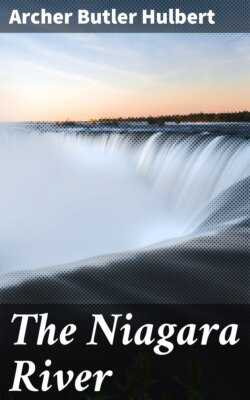Читать книгу The Niagara River - Archer Butler Hulbert - Страница 12
На сайте Литреса книга снята с продажи.
Niagara Falls.
From the original painting by Frederick Edwin Church, in Corcoran Gallery.
ОглавлениеBut we must observe here that these Rapids were something aside from beautiful to the French and English officers whose duty it was to defend and supply "the communication" from Fort Frontenac to Fort Chartres; they probably seemed very "horrid," in the old time sense, to those who struggled under the burdens of the ancient portage path. The southern termini of the two pathways—one on either side of the river—were Chippewa and Port Day, respectively. The route from Lewiston to Port Day was evidently the common portage until after the War of 1812 when the Canadian path was opened. A little below what is known as Schlosser Dock stood the French fort guarding this end of their old portage path. Fort du Portage or Little Fort Niagara, built about 1750, nine years before England conquered the region. Near by stands the one famous relic of the old régime, the Old Stone Chimney of Fort du Portage, later a chimney of the English mess-house at Fort Schlosser. As will be noted later Fort du Portage was destroyed by the retreating French, after the capture of Fort Niagara by Sir William Johnson: to guard that end of the portage the English under Colonel Schlosser built Fort Schlosser in 1761. The road occupying the course of the ancient portage does not extend to the river now, but it bears the old name, and on it you may see, not half a mile back, outlines of the earthen works of one of the eleven block-houses built in 1764 by Captain Montresor the first of which was erected on the hill above Lewiston: these block-houses guarded the important roadway from the assaults of Indians such as the famous Bloody Run Massacre of 1763. Frenchman's Landing is the modern name for the cove below the Old Stone Chimney where was the terminus of the earliest portage path guarded by the block-house known as the first Little Fort Niagara. This whole district is now the site of the power-houses and mills that are making Niagara a word to conjure with in the centres of trade as certainly as in the ancient day it was a mesmeric word in the courts and camps of the Old World.
The thunder of Niagara Falls reaches our ears even amid the music of these beautiful Rapids, and we are drawn on to the marvellous group of islands that impinge upon the cataract.
